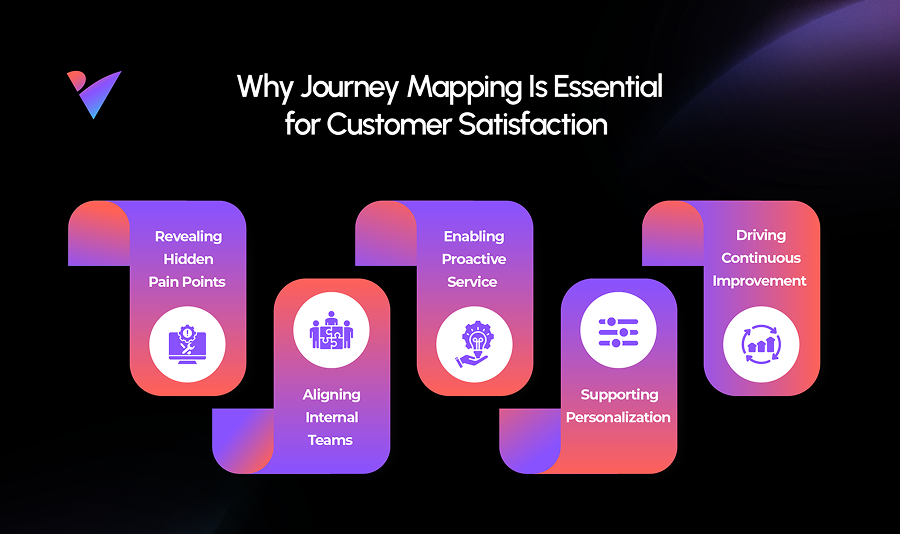Author name
March 27, 2024
Technology

Customer expectations are higher than ever. In an era where every interaction counts, businesses must go beyond offering great products—they must deliver exceptional experiences. One of the most powerful tools for understanding and improving the customer experience is Journey Mapping. Journey Mapping allows companies to visualize the entire customer experience across various touchpoints. This insight enables businesses to proactively improve interactions, resolve pain points, and create more meaningful, satisfying relationships with their customers.
Journey Mapping is the strategic process of creating a visual representation of every step a customer takes when interacting with a company. From the first website visit to post-purchase support, the map outlines:
A well-crafted journey map helps businesses understand how customers truly experience their brand—and where gaps or frustrations exist.

Customer satisfaction is directly linked to how well a business meets or exceeds customer expectations at each stage of the journey. Journey Mapping enhances satisfaction by:
A Customer Journey Map does more than just plot a path — it captures the customer’s emotions, expectations, and intentions at each touchpoint. When companies understand this emotional context, they can deliver experiences that truly resonate.
Journey Mapping is a powerful tool that puts the customer at the centre of your strategy. By understanding and improving every interaction in the customer journey, businesses can build loyalty, reduce churn, and enhance overall satisfaction.
Whether you're a startup or an enterprise, investing in Journey Mapping ensures you're delivering consistent, seamless, and satisfying experiences—every step of the way.
Discover how Sentiment Tracking can redefine your customer relationships, enhance decision-making, and position your brand at the forefront of success.